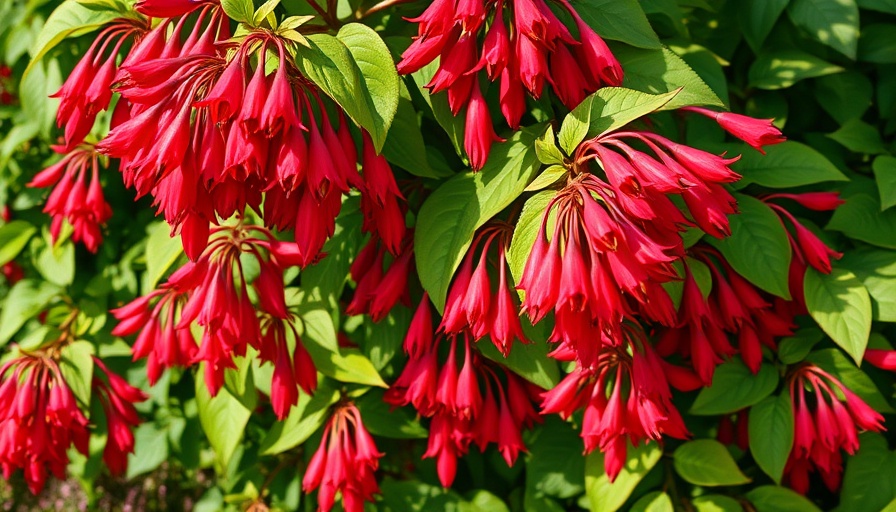
Discovering the Allure of Love Lies Bleeding
Love lies bleeding, scientifically known as Amaranthus caudatus, is not just a visually striking plant; it also carries a fascinating history and serves various purposes in gardens. Native to South America, this annual plant thrives in USDA Hardiness Zones 2 to 11 and is recognized for its impressive drooping flower panicles that bloom in stunning shades of red, gold, and even green. The plant’s dramatic aesthetic makes it an excellent choice for summer and fall gardens, often stealing the show in garden designs.
The Historical Significance behind Its Name
The intriguing name, "love lies bleeding," has Victorian roots that connect it to a romantic language of flowers, allowing lovers to express feelings discreetly. This cultural backdrop adds depth to its appeal for many gardeners who wish to invoke a sense of romance and beauty in their outdoor spaces.
How to Cultivate Your Love Lies Bleeding
When it comes to growing Amaranthus caudatus, there are a few key points to consider for successful cultivation. This plant prefers full sun exposure and well-draining soil, ideally averaging between slightly acidic (pH 6.4) and alkaline (pH 8.5). Plan to give your plants adequate spacing of around 18 inches to accommodate their potential mature size and drooping flower heads.
Care and Maintenance for Optimal Growth
Once established, love lies bleeding has moderate water needs, making it a relatively easy plant to maintain. Regular checks for pests and diseases, as well as occasional pruning, will keep your plants healthy. Practicing sustainable gardening techniques is beneficial here, utilizing organic fertilizers and avoiding synthetic pesticides to promote a thriving environment for both the plants and local wildlife.
Incorporating Love Lies Bleeding into Your Garden Design
This uniquely beautiful plant serves various functions in landscaping. Whether you’re looking to create a focal point in your flower garden or seeking a vibrant border for your vegetable plot, love lies bleeding is versatile enough to fit both roles. Additionally, as a gluten-free pseudo-cereal, the seeds can be harvested for culinary use, adding more value to your gardening project.
Common Challenges and Solutions
As with any gardening endeavor, love lies bleeding is not immune to challenges such as garden pests. Regular monitoring and the use of natural pest controls can help minimize these issues and contribute to a healthier garden ecosystem. Additionally, understanding the plant's vulnerabilities allows you to take preventive measures and improve your overall gardening strategy.
Exploring the Benefits of Growing Love Lies Bleeding
Growing love lies bleeding isn’t just about aesthetics; it enhances biodiversity and promotes pollinator activity in your garden. By cultivating this plant, you’re contributing to the welfare of various insects and ensuring a flourishing environment where nature thrives.
Concluding Thoughts
With its rich history and multifaceted uses, love lies bleeding stands out in the realm of gardening and landscaping. It offers a remarkable blend of beauty and practicality, making it a worthy addition to your garden space. Whether you are an experienced gardener or just starting, this plant can undoubtedly elevate your garden.
 Add Row
Add Row  Add
Add 




Write A Comment